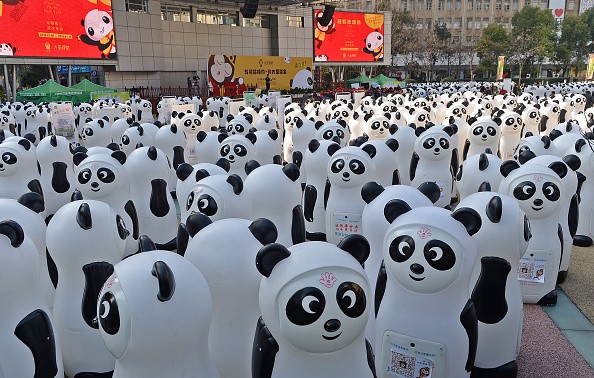Shanghai's panda bins are getting a high-tech upgrade that will help collection agents scoop their contents at the right time, according to a report by Shanghai Daily.
Panda bins are used to collect clothing donations from citizens and are placed in communities and schools across Shanghai. They are named as such because they are decorated to look like pandas.
The bins will be fitted with sensors that will send a signal to collection agents when they are almost full.
The sensors will be placed on the bin's panda ears. As soon as the bins reach 70 or 80 percent full, they will send signals to a monitoring platform so that the collection company can send workers to collect the old clothes.
"Without the sensors, the workers had to check the bins one by one all over the city and from time to time. It often led to complaints that the workers were not emptying the bins or were too slow in collecting them," said Zhang Yiming, manager of Shanghai Lusheng Textile, one of the three companies authorized to collect, classify and reuse the clothes in Shanghai.
The company has panda bins placed in over 1,000 residential complexes. It plans to add another 4,000 bins and cover almost 6,000 communities this year.
Each panda bin can hold 60 to 80 kilograms. Around 400 to 500 households share a single panda bin.
The company has plans to place 800 additional panda bins on Nanjing Road Pedestrian Mall and Huaihai Park on Saturday.
Each bin gets an average of 120 to 150 kilograms of clothes each month, according to Zhang.
Another problem collection aims to address is the issue of clothes being stolen from the panda bins, which has discouraged some from donating clothes.
While the panda bins have been upgraded several times with sturdier materials, these have failed to stop the thefts. Some of the clothes end up in second-hard markets or are sold to factories.
The panda bins were introduced in 2012 for the sake of the city's environmental campaign. Clothes in good condition are donated to underprivileged schools, while the rest are processed into textiles and other raw materials.
According to Zhang, around 8 to 10 percent of the collected clothes are donated, while the rest are recycled.



























